Table of contents
Documentation date: 20 mai 2021
Version state
Valid
Validation date: 3 juin 2021
Version documentalist
- svidzinski (Joao.Svidzinski@ircam.fr)
Version realisation
- Emmanuel Nunes (Composer)
- Eric Daubresse (Computer Music Designer)
Upgrade Motivation
2021 port (Max8 64bit with 48Khz SR) of the original version .
Comment
This patch corresponds to the latest version of the events noted in pencil by Nunes and Daubresse (contact Ircam Production if necessary). The other versions have been lost, but it is still possible to change version by accessing [patcher midi i / o] and switching to "version 2".
Other version(s)
Detailed staff
- flûte (aussi flûte piccolo), flûte alto (aussi flûte piccolo), hautbois, cor anglais, 2 clarinettes, clarinette basse, basson, cor, trompette, trombone, 3 percussionnistes, glockenspiel, harpe, célesta, 3 violons, 2 altos, 2 violoncelles, contrebasse
Channel details
- Number of input channel : 20
- Number of output channel : 8
Electronic equipment list
Computer Music Equipment
-
1 MacBook Pro - Apple Laptops
(Apple)
-
1 Max 8 - Max
(Cycling74)
-
1 Fireface 802 - Sound Board
(RME)
-
1 KX 88 - MIDI Keyboard
(Yamaha)
-
1 MIDI Mixer - MIDI Mixer
Work related information
Premiere
- 18 octobre 1986, <p>Allemagne, Donaueschingen, festival</p>
- 16 novembre 1992, <p>Paris, Festival d'automne à Paris</p>
Publisher :
- Ricordi
Realisation
- Eric Daubresse
Work length
- 29 mn
Useful links on Brahms
- Wandlungen cinq passacailles pour vingt-six instruments et électronique live ad libitum (1986), 29mn
- Emmanuel Nunes
| File | Author(s) | Comment | |
|---|---|---|---|
| Download [2,7 Gio] | Simulation files Wanlungen-Simulation | ATTENTION !! The simulation sound file are not complete. The file starts in the middle of the first Passacaglia. | |
| Download [4,6 Mio] | Patch Wandlungen-Patch | ||
| Download [535,6 Kio] | Performance documentation Wanlugen_Midi-Score | keyboard midi score to trigger events |
Instructions
Audio setup
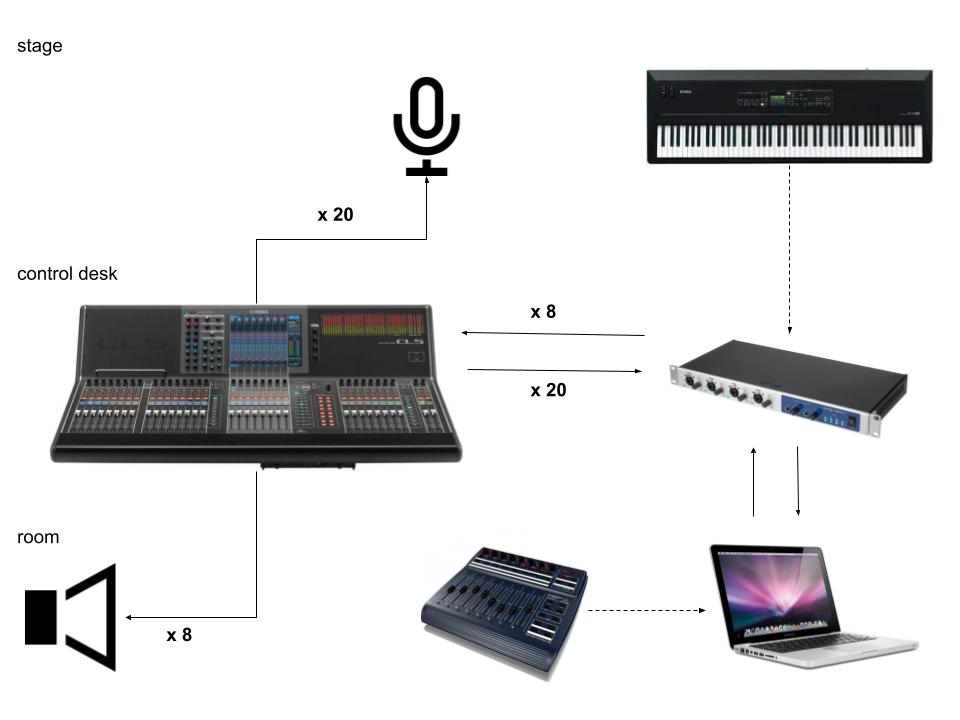
Loudspeaker setup
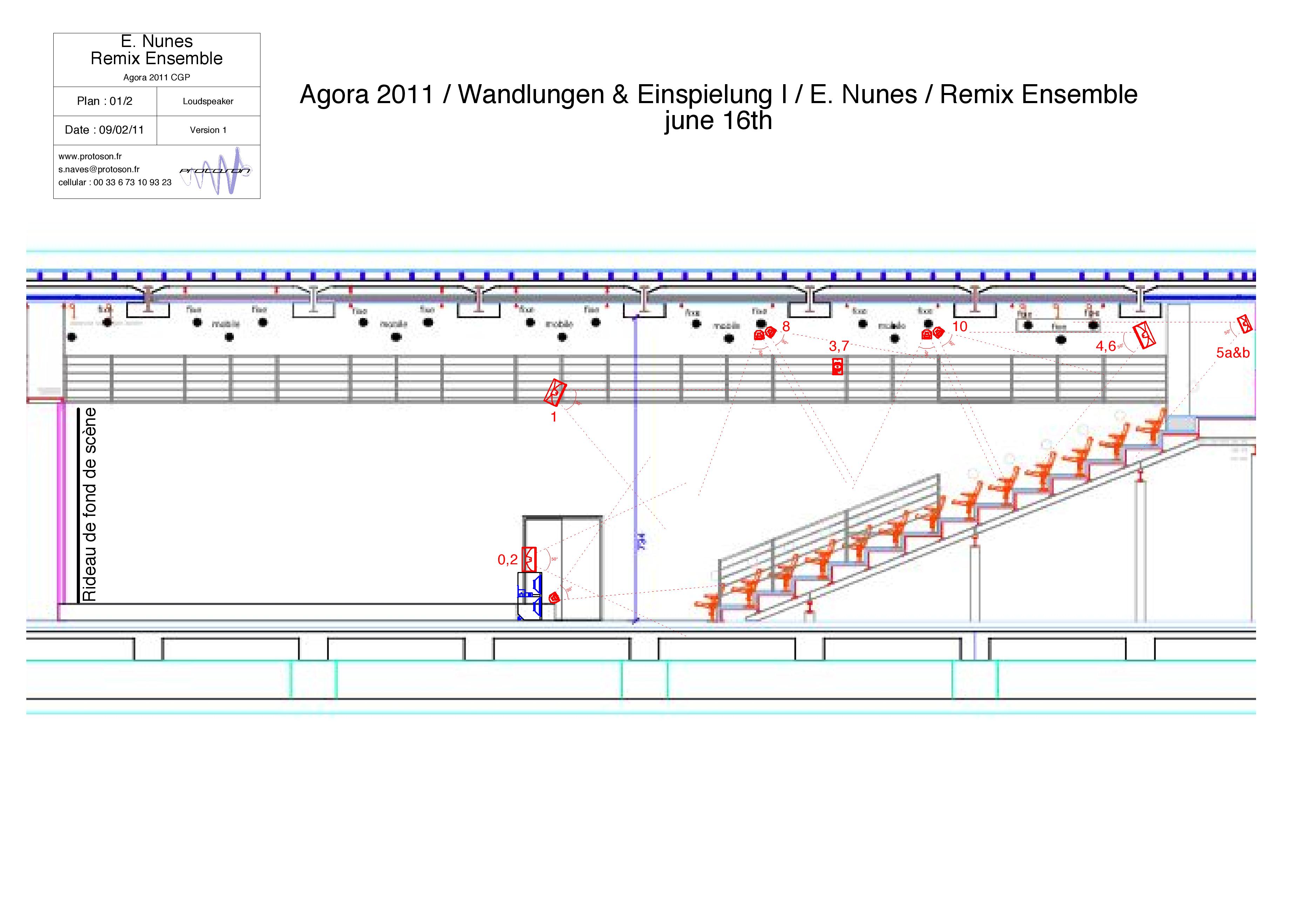
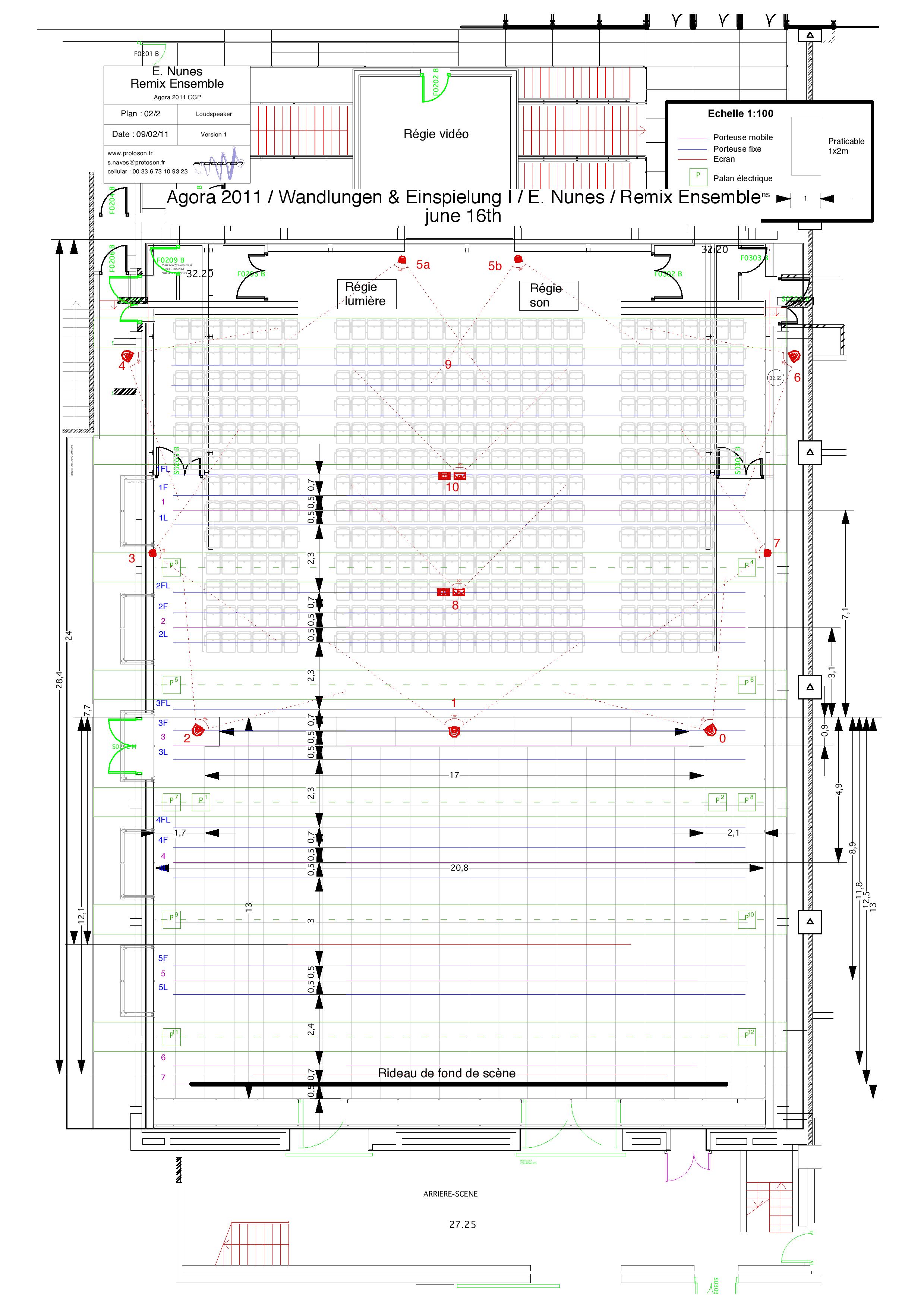
Midi setup
A Master Midi Keyboard with 88 keys (type Yamaha KX88) is required to trigger programs/events. Download the Midi Keyboard score with all instructions.
It’s also possible to change the events by pressing spacebar.
Use BCF-2000 or Lemur to control levels of treatment (change the “Midi device” menu and choose the midi input)
Sliders
- Control 1 [ctlin 7 1] = Direct level in dB
- Control 2 [ctlin 7 2] = Spatialization level
- Control 3 [ctlin 7 3] = Ring modulation level
- Control 4 [ctlin 7 4] = Harmonizer level in dB
- Control 5 [ctlin 7 5] = = reverb level in dB
- Control 6 [ctlin 7 6] = = delay level in dB
- Control 7 [ctlin 7 7] = Factorization envelopes length (1 normal length, 2 two times longer, 0.5 two times shorter)
Software installation
Download Wandlungen-Patch.dmg and Wandlungen-Simulation.dmgfiles.
In Max 8, choose …/Wandlungen_2021 in option > File preferences
Check the Audio status in option > Audio Status (see below)
Close max and open Wandlungen_2021.maxpat (red label)

DSP status
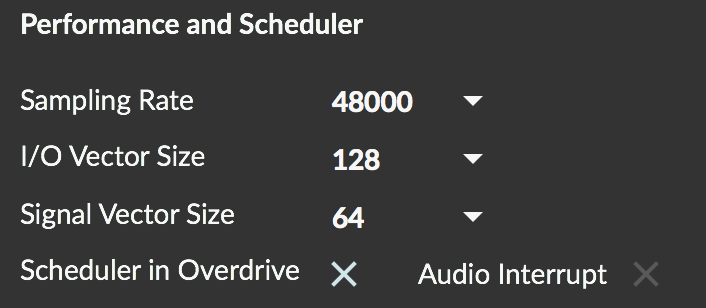
Patch presentation
The concert patch layout, as well as the DSP and control system, are based on the original version.
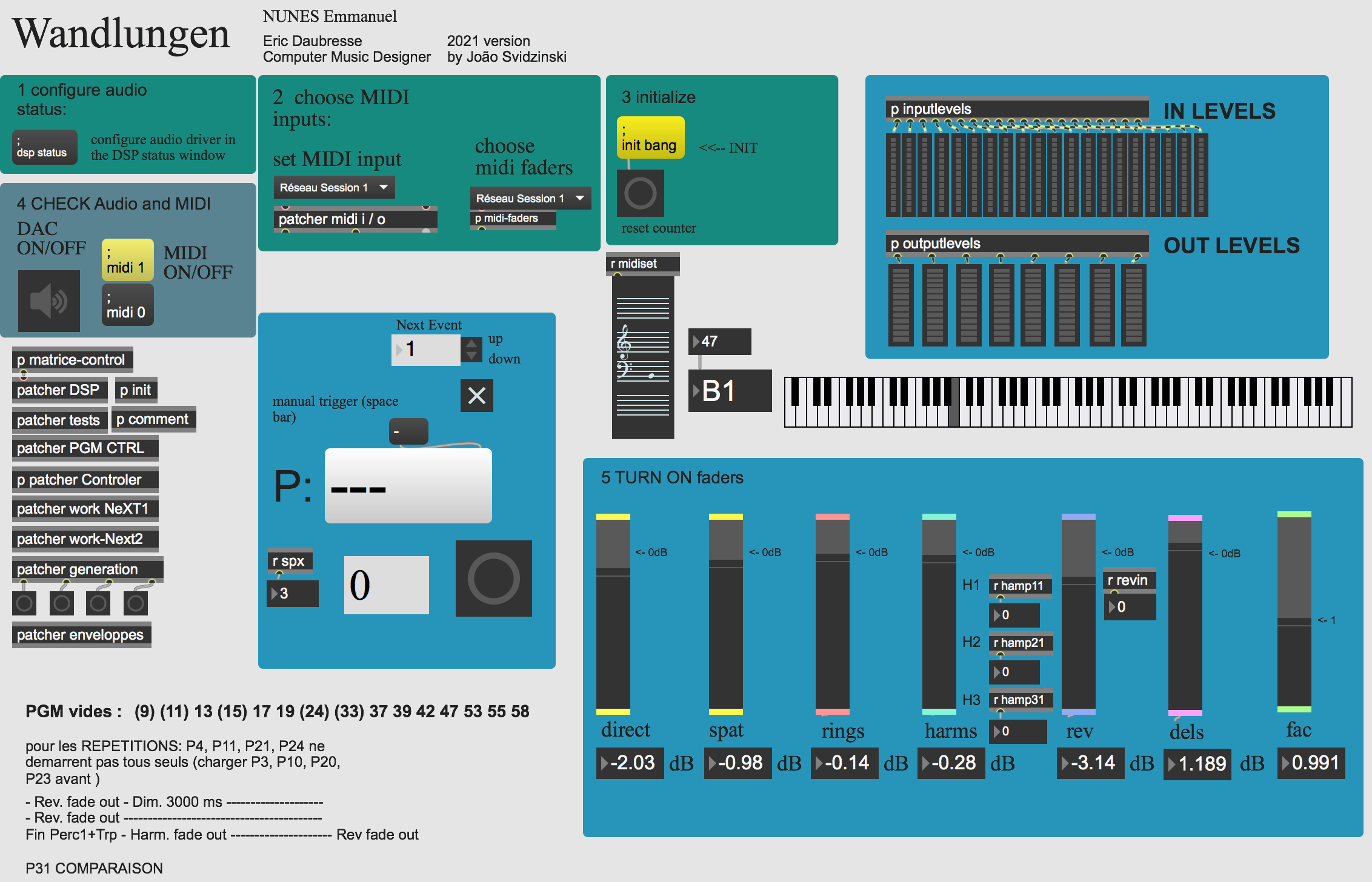
This patch corresponds to the latest version of the events noted in pencil by Nunes and Daubresse (contact Ircam prduction if necessary). The other versions have been lost, but it is still possible to change version by accessing [patcher midi i / o] and switching to “version 2”.
DSP engine
The DSP part consists of ring modulation, delay, harmonizer and reverb. They are based in the original version.
See the Eric Daubresse’s document for more information regarding DSP and spatialization.
http://brahms.ircam.fr/media/uploads/EN_L_92-FR.pdf
Spatialization
Sounds are fixed or they move using rhythmic movements.
Movements are controlled by patchs called circuit, BNP and lope. Rhythms are controlled by the patcher generation. The three ways of moving can be used at the same time.
The sound envelope could be controlled with the fader “Factorization envelopes length” which controls factorization of the envelope duration. The bigger superfac is, the longer will be the sound envelope in each HP.
See the Eric Daubresse’s document for more information regarding spatialization.
http://brahms.ircam.fr/media/files/2021/05/24/Lichtungen-eric.pdf
Initialization routine
Check all the points as specified in the main patch:
- Configure audio status (see DSP status above).
- Select the midi controller and the keyboard input.
- Press “init” and “reset bang” buttons.
- Turn on the DSP and midi.
- Turn on faders.
- Trigger the events to start (using the keyboard or the space bar, check the gate to allow it).
System calibration and tests
- Follow the Initialization routine.
- Check the DSP status.
- Check the Midi controller input.
- Check the Midi keyboard input.
- Adjust the instruments input level.
- Listen to the spatialisation. If the sound which goes from one to another HP is too long, decrease the superfactor. However, if you have holes of sound when the sound goes from an HP to another, increase the superfactor (see patch presentation, spatialization above for more details).
Simulation system
The simulation files could be used to test the setup before the rehearsal.
- Download Wandlungen-Simulation .
- Open Wandlungen-Simulation.maxpat.
- Use it as a simulation of the adc mic input
Warning !! The simulation sound file are not complete. The file starts in the middle of the first Passacaglia.
© IRCAM

This documentation is licensed under a Creative Commons Attribution-NonCommercial-NoDerivatives 4.0 International License.
Program note
Bien plus courant que Einspielung, Wandlungen signifie « transformations », « transmutations », « métamorphoses » (cette dernière acception étant plus précisément rendue par Verwandlungen). Dans mon cas, ces Wandlungen sont plurielles, tout simplement parce que le concept s’appliquait aussi aux traitements en temps réel, que je mettais en œuvre pour la première fois.
Il y avait donc deux Wandlungen simultanées : la première était la pièce elle-même, et l’autre, ma rencontre avec le temps réel. J’y aspirais à une grande clarté harmonique, parfois crue. Il y a donc de nombreuses superpositions de quintes et de quartes, qui lui donnent cette couleur immédiatement identifiable, comme d’une silhouette éclairée à contre-jour. Dans son développement, j’ai voulu une base rythmique d’une grande simplicité : on ne s’en rend pas toujours compte, mais on peut avoir des pages entières remplies de doubles croches qui, par la manière dont chaque double croche est rendue (changement ponctuel de timbre, de groupe, d’espace, de registre, etc.), peuvent masquer leur régularité première et devenir très accidentées et d’une grande complexité rythmique à l’audition. Enfin, un dernier élément très important de la pièce : le dispatching spatialisé des timbres donne naissance à cette double orchestration, dont nous avons déjà parlé.
La pièce elle-même est composée de cinq passacailles – la dimension « passacaille » y est assez présente, d’une manière ou d’une autre. Les passacailles 1, 2, 4 et 5 se développent sur un même matériau – sous différentes formes. Seule la troisième – un trio à cordes monodique – a un matériau différent, qui est aussi présent dans [work:10837][Aura] pour flûte seule.
Emmanuel Nunes, festival Agora 2011.
Version documentation creation date: 20 mai 2021 17:01, update date: 9 décembre 2021 11:22